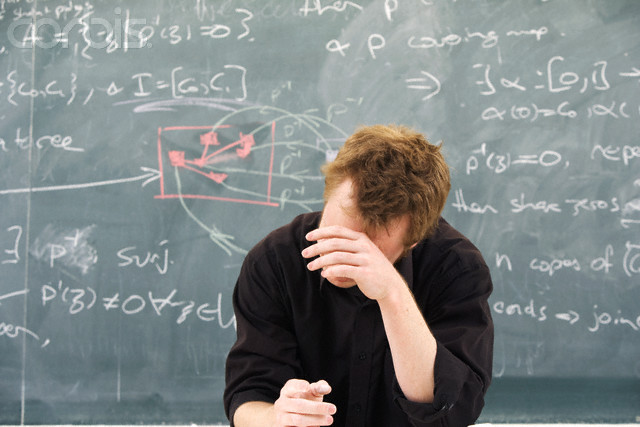ART CAN NEVER BE A SCIENCE. Its claims are not falsifiable. There is no hard data on which to resolve disputes about what, when all boils down, are matters of taste. Yet the urge to gild art with the luster of science keep bubbling to the surface.
John Silber’s Architecture of the Absurd sets the blame for this squarely in the lap of Sigfried Giedion (d, 1968), a Swiss art historian, architecture critic, and champion of modernism. Since it was published in 1941, Giedion’s classic study Space, Time and Architecture has been required reading for students of modern architecture.
The 900-page text leads us on a remarkable scholarly tour through architecture and city planning from the cittá ideale of the Renaissance to the modernist movement. Along the way, it exalts architects—and with them, artists—as geniuses whose production is beyond the ability of even a reasonably informed public to assess. As Silber puts it: “Architects are now to consider themselves descendants of Nietzche’s Zarathustra, ‘geniuses’ who by right break all laws and conventions.”
Silber’s précis of Giedion’s premise goes like this: Genius is its own authority. Those chosen few who possess it owe nothing to their clients or the public; the gift of their genius is enough. They are commissioned by a kind of divine right to stamp the world with their products. This royal absolutism extends also to the painting world, which no longer needs to address the human condition or concerns.
Yes, I know, it sounds cranky. But there is much truth in it. The very mandate from heaven an egalitarian people reject in politics (or, at least, are presumed to reject), they accept in the arts. We need our betters, it seems. We find them in artists and architects. No small component of this deference is a cultivated association between art and the intellectual rigors of science.
Silber is not belittling the reality of excellence, denying hierarchies of achievement or taking aim at the hard-won expertise—and authority that flows from it—that every culture needs to prosper. Not at all. What he wants to humble is the exalted aura that surrounds art and architecture and its priesthood of practitioners and commentators. A season does not go by without yet another artist posing as a scientist of some sort. Press releases chirp about the juncture of art and science. The lure of scientific precision tempts critical organizations like AICA to seek a theoretical basis for critical judgment. No more mistakes, if we can get the theory right.
(Even hair salons have hopped aboard that bandwagon. Next time you are in Chicago, try Art + Science Salon in Lincoln Park. If you do not like the cut, it just means you do not understand it. There is no such thing as a bad haircut anymore, just bad heads.)
The conceit was advanced by Giedion who attributed to Picasso and the Cubists a knowledge of Einstein’s special theory of relativity that none of them possessed. He claimed that artists in their “laboratories” untangle pictorial problems in the same way—and, implicitly, on the same plane of intellectual significance—that scientists perform experiments with nature. A small band of geniuses—Picasso, Braque, Le Corbusier—were the spear carriers for true invention and research. They sought “a new concept of space.” With no evidence to support the claim, Giedion insisted that the artists he championed were close followers of scientific developments, especially in physics.
It is worth repeating in full:
Cubism, Giedion argues, was the attempt of artists to come to grips with non-Euclidean geometry. Cubists, he claims, realized it was no longer possible to present “exhaustive description from one point of reference.” “Space in modern physics,” he continues, “is conceived of as relative to a moving point of reference, not as the absolute and static entity of the Baroque system of Newton.”
Giedion’s assumption that artists look to scientists and respond quickly to the latest scientific discoveries is suspect. Non-Euclidean geometries were conceived . . . not at the beginning of the twentieth century, the decade of Cubism’s birth, but in the 1820s by Lobachevsky and in the 1850s by Riemann. It it was the conjecture of non-Euclidian geometry that inspired artists, why did it take them eighty years to come up with Cubism? And if was the publication of Einstein’s special theory of 1905 that set them on their hunt, how was it that these artists—abysmally ignorant of advanced tensor mathematics and physics—understood Einstein years before more than a handful of scientists?
More important, Giedion and his admirers ignore the fact that classical architects knew that buildings could be seen simultaneously by different people from many different perspectives, and that each perspective was as valid as any other. We know, for example, that the architects of the Parthenon carefully tapered their columns so that they appeared in balance from a range of perspectives. They also knew, no less than we, that a single person can never view all perspectives simultaneously. Over time, one can see an object from all perspectives and later remember them. But any any single moment one can see an object from only one perspective.
I love that phrase no less than we. As used here, it is an implicit call for modesty in the face of what history teaches. And without modesty, our arts are doomed by hubris. As with Nietzsche himself, dementia sets in. And art ends in a dribble.
© 2010 Maureen Mullarkey



